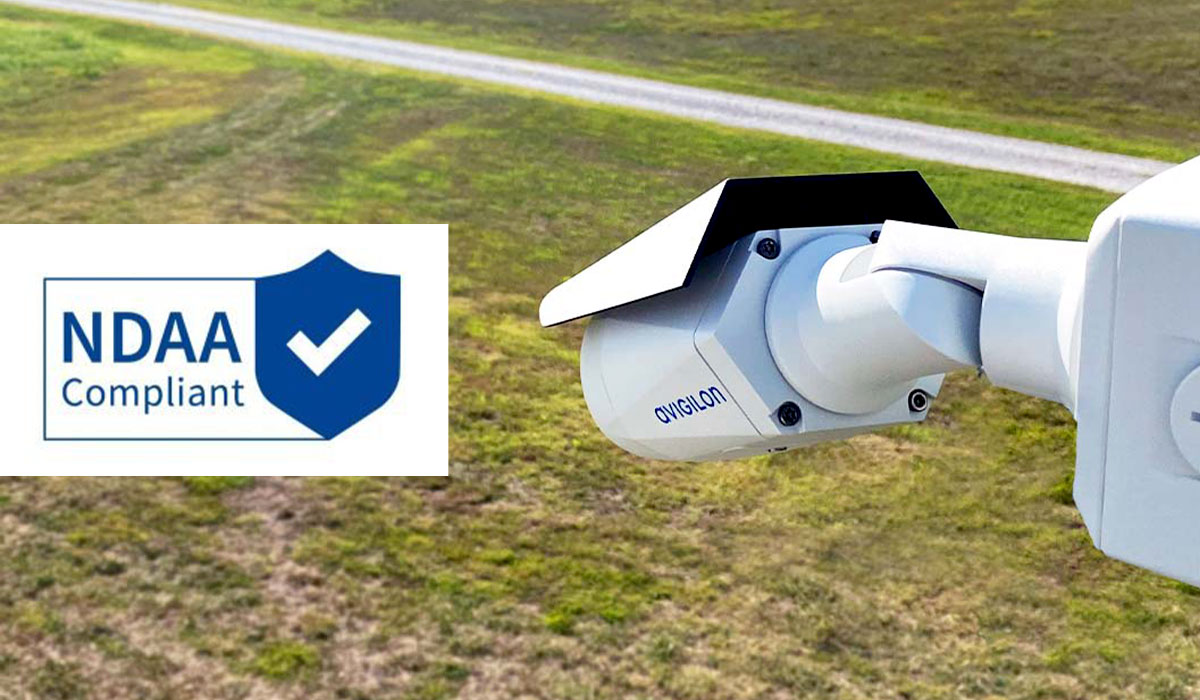
Are you confident your organization’s security cameras are truly protecting your data and facilities, or could they be exposing you to unforeseen cybersecurity risks? For many industries, understanding and adhering to compliance standards is essential. At Inteconnex, we prioritize NDAA compliance to safeguard the data and assets of our customers, ensuring that every system we sell and service meets rigorous standards. But what does it actually mean for a camera to be “NDAA compliant,” and why is it legally required for certain organizations?
In this guide, we’ll break down what NDAA compliance is, how it impacts physical and cybersecurity, why compliance is mandatory for certain sectors, and what the consequences are if you don’t comply.
What is NDAA Compliance?
The NDAA, or National Defense Authorization Act, is a U.S. federal law that outlines the budget and expenditures for the Department of Defense. In 2019, Section 889 of the NDAA was enacted to restrict the use of certain foreign-manufactured telecommunications and surveillance equipment due to significant cybersecurity risks. NDAA-compliant cameras are those that do not contain parts or software from manufacturers on a restricted list, including specific foreign entities known to pose security threats.
For organizations in government, education, healthcare, and any entities receiving federal funding, NDAA compliance is not optional—it’s required by law. These restrictions are designed to protect critical infrastructure and sensitive data from potential cybersecurity threats posed by non-compliant equipment. Non-compliance can lead to serious legal, financial, and security consequences.
At Inteconnex, we understand the importance of compliance, which is why we exclusively sell and service NDAA-compliant systems, ensuring that our clients are protected and in line with legal requirements.
Why NDAA Compliance Matters for Physical Security and Cybersecurity
When your job is to protect people, assets, and data, even a minor vulnerability can have far-reaching consequences. NDAA compliance is a legal mandate that helps reduce the risk of cyber threats and data breaches, particularly in industries where security is critical. Non-compliant cameras can have hidden backdoors, allowing unauthorized access to your network, manipulation of video feeds, or access to sensitive data.
With NDAA-compliant security cameras, these vulnerabilities are mitigated. By using compliant systems, organizations ensure that their surveillance devices don’t leave open doors to their networks.
The Cybersecurity Risks of Non-Compliant Cameras
Understanding the risks posed by non-compliant cameras is crucial for any organization. Here are some of the cybersecurity threats that can arise when using non-compliant systems:
- Unsecured Data Streams: Non-compliant cameras may use unsecured data transmission channels, making it easier for unauthorized users to intercept and access video feeds.
- Remote Hacking Potential: Certain foreign-manufactured devices can contain backdoors that allow unauthorized remote access. This poses a significant risk, as hackers can manipulate or disable cameras remotely.
- Data Harvesting: Some non-compliant devices may collect and store sensitive data that can be accessed by foreign actors, putting private information about personnel, students, patients, or facilities at risk.
- System-Wide Network Security Impact: When non-compliant cameras are integrated into a network, they can create weak points that expose other connected devices to risk, compromising the organization’s broader cybersecurity efforts.
By ensuring that all systems we provide meet NDAA standards, Inteconnex helps organizations avoid these vulnerabilities and secure their environments from cyber threats.
What Happens If You Don’t Comply?
Beyond the cybersecurity risks we mentioned earlier, failing to comply with NDAA requirements can have serious legal consequences, particularly for organizations in government, k-12 and higher education, healthcare, and other regulated industries. Non-compliance can disqualify your organization from federal contracts, grants, or funding, limiting your ability to pursue essential projects and partnerships. This can have a significant financial impact, especially for entities that rely on federal support.
The Future of Physical Security
The push toward NDAA compliance signals a significant shift in the future of physical security, with organizations now prioritizing equipment that not only meets high-performance standards but also adheres to stringent cybersecurity requirements. This focus on compliant, secure technology is setting new industry benchmarks, especially as more organizations recognize the risks posed by non-compliant devices.
For the future, we can expect a few key trends to emerge:
- Heightened Standards Across All Security Equipment: NDAA compliance is just the beginning. As more industries prioritize cybersecurity, standards for all types of security technology—from cameras to access control systems—will continue to evolve to meet higher security criteria.
- Integrated, Cyber-Resilient Security Ecosystems: The emphasis will shift toward creating unified security ecosystems that integrate compliant video surveillance, access control, and monitoring systems. This approach strengthens cybersecurity across the board and ensures that every device in a security network contributes to a holistic, resilient infrastructure.
- Innovation and Growth in Secure Technology: The demand for compliant, cyber-secure equipment is likely to accelerate innovation. We’ll see more manufacturers developing solutions that prioritize both physical and cybersecurity, giving organizations options that are both safe and future-proof.
How to Find Out if Your Cameras Are Compliant
To find out if your cameras are NDAA compliant, start by checking the manufacturer’s specifications and model information. Look for any indication that the cameras contain parts or software from restricted manufacturers listed under Section 889 of the NDAA. This information can sometimes be complex to verify on your own, so partnering with a trusted security integrator, like Inteconnex, can be invaluable. Our team will assess your current system, identify any non-compliant components, and offer safer alternatives that meet both regulatory standards and your organization’s security needs.
